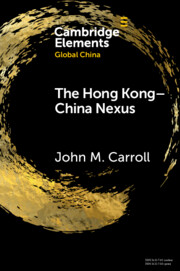Element contents
The Hong Kong-China Nexus
Published online by Cambridge University Press: 23 March 2022
Summary
Information
- Type
- Element
- Information
- Series: Elements in Global ChinaOnline ISBN: 9781108893275Publisher: Cambridge University PressPrint publication: 05 May 2022
Bibliography
Accessibility standard: Unknown
Why this information is here
This section outlines the accessibility features of this content - including support for screen readers, full keyboard navigation and high-contrast display options. This may not be relevant for you.Accessibility Information
- 14
- Cited by
